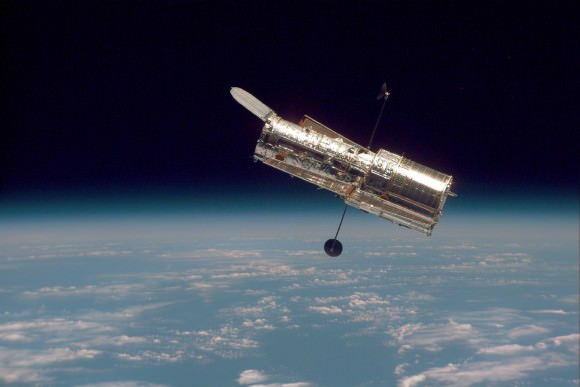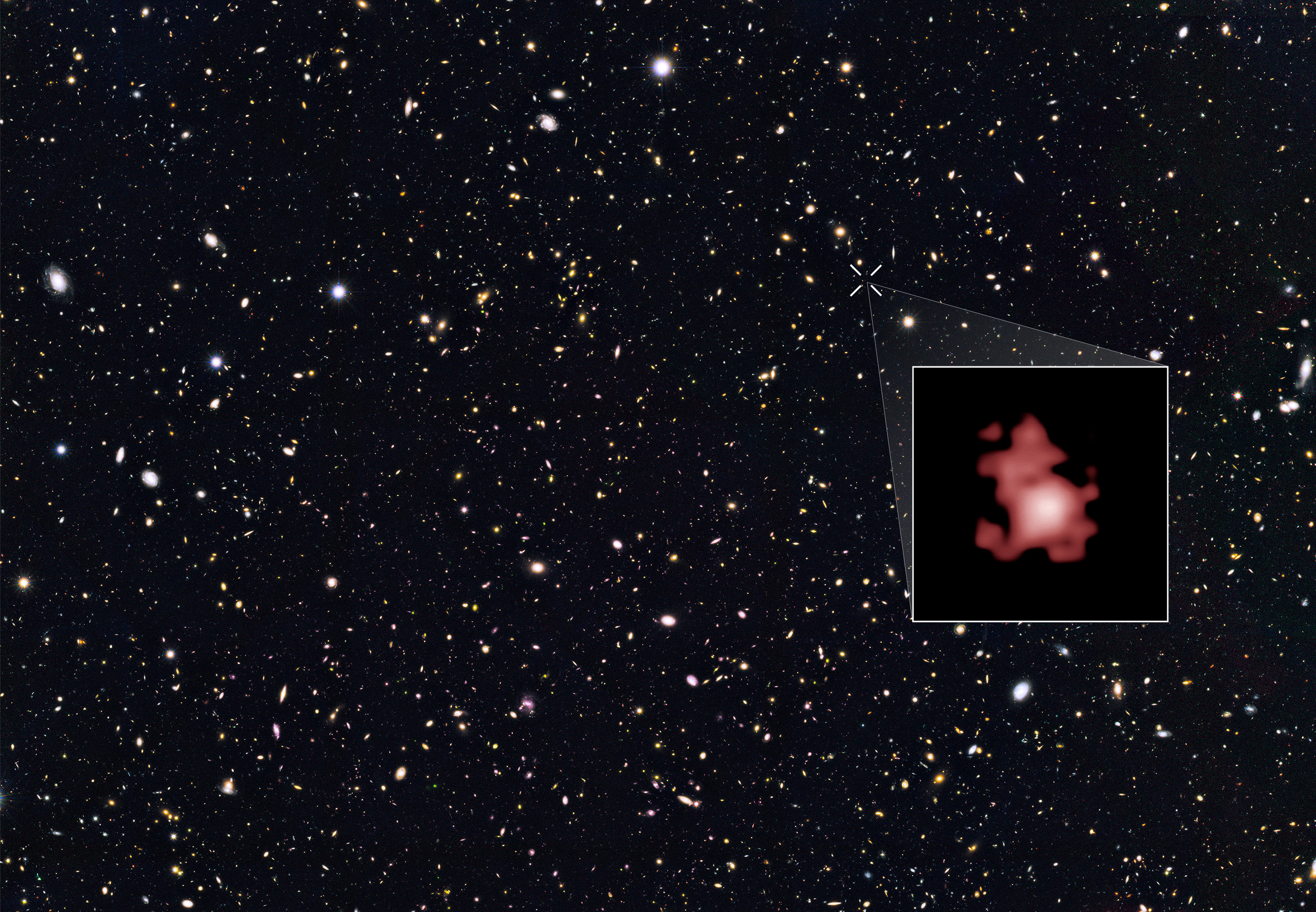Since it was first launched in 1990, the Hubble Space Telescope has provided people all over the world with breathtaking views of the Universe. Using its high-tech suite of instruments, Hubble has helped resolve some long-standing problems in astronomy, and helped to raise new questions. And always, its operators have been pushing it to the limit, hoping to gaze farther and farther into the great beyond and see what’s lurking there.
And as NASA announced with a recent press release, using the HST, an international team of astronomers just shattered the cosmic distance record by measuring the farthest galaxy ever seen in the universe. In so doing, they have not only looked deeper into the cosmos than ever before, but deeper into it’s past. And what they have seen could tell us much about the early Universe and its formation.
Due to the effects of special relativity, astronomers know that when they are viewing objects in deep space, they are seeing them as they were millions or even billions of years ago. Ergo, an objects that is located 13.4 billions of light-years away will appear to us as it was 13.4 billion years ago, when its light first began to make the trip to our little corner of the Universe.

This is precisely what the team of astronomers witnessed when they gazed upon GN-z11, a distant galaxy located in the direction of the constellation of Ursa Major. With this one galaxy, the team of astronomers – which includes scientists from Yale University, the Space Telescope Science Institute (STScI), and the University of California – were able to see what a galaxy in our Universe looked like just 400 million years after the Big Bang.
Prior to this, the most distant galaxy ever viewed by astronomers was located 13.2 billion light years away. Using the same spectroscopic techniques, the Hubble team confirmed that GN-z11 was nearly 200 million light years more distant. This was a big surprise, as it took astronomers into a region of the Universe that was thought to be unreachable using the Hubble Space Telescope.
In fact, astronomers did not suspect that they would be able to probe this deep into space and time without using Spitzer, or until the deployment the James Webb Space Telescope – which is scheduled to launch in October 2018. As Pascal Oesch of Yale University, the principal investigator of the study, explained:
“We’ve taken a major step back in time, beyond what we’d ever expected to be able to do with Hubble. We see GN-z11 at a time when the universe was only three percent of its current age. Hubble and Spitzer are already reaching into Webb territory.”

In addition, the findings also have some implications for previous distance estimates. In the past, astronomers had estimated the distance of GN-z11 by relying on Hubble and Spitzer’s color imaging techniques. This time, they relied on Hubble’s Wide Field Camera 3 to spectroscopically measure the galaxies redshift for the first time. In so doing, they determined that GN-z11 was farther way than they thought, which could mean that some particularly bright galaxies who’s distanced have been measured using Hubble could also be farther away.
The results also reveal surprising new clues about the nature of the very early universe. For starters, the Hubble images (combined with data from Spitzer) showed that GN-z11 is 25 times smaller than the Milky Way is today, and has just one percent of our galaxy’s mass in stars. At the same time, it is forming stars at a rate that is 20 times greater than that of our own galaxy.
As Garth Illingworth – one of the team’s investigator’s from the University of California, Santa Cruz – explained:
“It’s amazing that a galaxy so massive existed only 200 million to 300 million years after the very first stars started to form. It takes really fast growth, producing stars at a huge rate, to have formed a galaxy that is a billion solar masses so soon. This new record will likely stand until the launch of the James Webb Space Telescope.”
Last, but not least, they provide a tantalizing clue as to what future missions – like the James Webb Space Telescope – will be finding. Once deployed, astronomers will likely be looking ever farther into space, and farther into the past. With every step, we are closing in on seeing what the very first galaxies that formed in our Universe looked like.
Further Reading: NASA


As we see farther and farther back towards the beginning of the Universe when we look at galaxies near the beginning of the Universe and are about 180 degrees in opposite directions, are we seeing two galaxies that are ~26 billion light years away from each other? Or are we seeing two galaxies that are relatively close to each other but only look to be far apart due to some type of relative distortion in the curved universe? And how could we prove either option?
I believe that scientist’s distance calculating is on the right track. I don’t believe this galaxy 13.4 bil years old. That’s what we do see (13.4) but as this light reached us, the galaxy was already fully formed. So it’s true age, by necessity, is way older than 13.4.
You’re right. It’s 13.8 billion years old. And that distance, all we see is the Cosmic Microwave Background (CMB), which is the leftover energy from the creation event. Seeing this at a distance of 13.8 light years is what gives the Universe it’s proper age.